At the WWDC, Apple took the opportunity to toss the new Kaby Lake i7 processor into the the redesigned 2016 MacBook Pro chassis. If you liked the 2016 but didn't jump, you'll be even happier with the 2017.
The latest MacBook Pro models are internally Apple's 13th generation MacBook Pro, but they effectively represent the fourth major body redesign. The new design leans heavily on techniques used for the Retina MacBook, MacBook Air, and iPad, trimming down the design to 0.61 inches (15.5 mm) thick and and 4.02 pounds — making it thinner than the MacBook Air.
Apple's high end 15-inch MacBook Pro is available in standard silver and a darker Space Gray finish, and is sold alongside a smaller 13-inch version — but that model is a different review.
As with the 2017 13-inch non-Touch Bar model's similarity to the 2016 model, so is the 15-inch Touch Bar version nearly identical to last year's variant (which is now $200 to $450 off at authorized resellers). If you're not a fan of four Thunderbolt 3 as found on the 2016, there's no additions here. Likewise, the keyboard, screen, trackpad, and Touch Bar are the same year-over-year, so if you were hoping that Apple would change direction, you'll be disappointed.
As before, the Touch ID button is still a physical one, and it serves mostly as an emergency way to force a shut down in the case of a nasty Kernel Panic, more than a power-on switch. Other power functions are handled automatically by default, with the user opening and closing the lid to respectively wake or start and sleep the machine.
Touch ID isn't universal, though. If you log out of your account, you'll need to supply a password to log back in; Touch ID only works if your account is active. You also need to log in manually after a power cycle, just as with iOS devices.
The Touch Bar is still intended to appear and function as a dynamic strip of virtual keyboard keys, unconfined by the physical structure of mechanical keys. When you hold down the FN key, the Touch Bar reverts to a standard strip of 12 function keys and the ESC key (below). If you boot into Windows, the Touch Bar reverts to displaying virtual FN keys.
After nearly nine months of use, the verdict is still out on the Touch Bar. it's not a universal tool, and we don't use it for everything. Mileage may vary, user to user.
But — you're probably not reading to hear about the Touch Bar again.
Hardware boosts
The whole point of the 2017 MacBook Pro refresh was the addition of Kaby Lake. When the machine was originally designed and shipped, the quad-core processor suitable for the 15-inch MacBook Pro wasn't available.
It is now, and Apple has fulfilled what was heralded in 2006 as the big advantage to shifting to Intel — the ability to update the hardware frequently.
There are two main configurations of the 15-inch MacBook Pro. We tested the most powerful model with a 3.1GHz i7 and Radeon 560 4GB graphics and compared it to the 2016 with its top i7 2.9GHz processor and Radeon 460.
The 2016 Mac rated decent single- and multi-core scores of 4,635 points and 13,416 points, respectively, on the latest version of Geekbench 4. By comparison, the 2017 model reached 4,891 points and 16,426 points, respectively. The 12-percent single core and 24-percent multi-core improvements came as a surprise considering typical CPU updates usually result in single digit improvements.
Even though the rated clock speeds have only risen by 200 to 300MHz, actual usable performance under load has increased by 500 to 600mhz explaining the large multi-core improvements. Kaby lake in the 2017 also runs cooler than the Skylake in the 2016, allowing the turbo boost clock speed to stay higher for longer during processor intensive tasks.
The CPU improvements are two-fold — there is a slight gain in performance because of the architectural improvements, but the bigger gain is because the processor runs cooler, and a frequency boost was possible. At 16,426 points, the multi-core score almost matches the 16,975 points of the Skylake 4.0Ghz i7 CPU, which was the best processor option available with the late-2015 5K iMac.
As far as rumored 32GB configurations go — Kaby Lake can also support more than 16GB of DDR3 and DDR4 RAM. However, LPDDR3 has little in common with its desktop progenitor, and is limited to 16GB by spec and design.
Users needing a 32GB model will need to wait for a possible redesign to use the more power-hungry RAM, or for Cannon Lake processors to ship, at some point in late 2018.
Renumbered GPUs don't mean an enormous up-tick in performance
New with the 2017 model are the 500-series of Radeon Pro GPUs. The 450, 455, and 460 shipped in the 2016 iteration, and the 555 and 560 ship in the 2017 model.
The 1 teraflop Radeon Pro 450 is gone in the "low end" of the 15-inch MacBook Pro. It's been replaced by the 1.5Tflop 555 in the base configuration, with the 1.9Tflop 560 at the high end.
Roughly, the 555 at the low-end is analogous to the 455 in the higher end of the store-available 2016 MacBook Pro, and the 560 is about the same as the 460.
Like previous models, macOS can automatically activate and switch to the dedicated GPU when necessary and fall back to integrated graphics to save energy. In these cases, the on-board graphics are a hair faster, but nothing notable.
Geekbench 4's OpenCL graphics test showed almost identical scores for both machines. The 2016 came in at 42,887 and the 2017 version scored 42,990. We also tested Unigen Heaven, a 3D graphics benchmark, with the older model getting a score of 461 with 18.3 frames per second, while the 2017 15-inch Macbook Pro with 560 graphics rated 468 and 18.6FPS.
While faster processors are nice for those editing video or performing other graphics intensive tasks, the graphics card is more of a limitation. Comparing Geekbench 4 scores to the latest fully-upgraded 5k iMac, the 2017 Macbook Pro CPU keeps up quite well but the Radeon Pro 560 is miles behind the Radeon Pro 580. The 2017 iMac attains nearly three times higher OpenCL scores at 117,742 compared to 42,990 for the MacBook Pro.
We have been using the 2016 Macbook Pro for video production since launch and the bottleneck has always been graphics capabilities. When working with effects or animations, the CPU sits at about 30-50 percent usage while the graphics card is maxed out.
This is further proven by BruceX, a Final Cut benchmark in which the 2015 5K iMac with practically the same CPU performance but faster graphics takes 27 seconds to complete. By contrast, the fastest 2017 Macbook Pro takes 40 seconds for the same task.
A word about Thunderbolt 3
There remains a great deal of gnashing of teeth about Thunderbolt 3. Users complain about the expense of dongles to adapt, and Apple's lack of consideration for users in moving to the new connector.
In the user's defense, they're not entirely wrong. In Apple's defense, Thunderbolt 3 with the USB-C connector is more future-proof and far faster than USB 3.0.
A solution that may keep costs down is a Thunderbolt dock. While Thunderbolt 3 docks start at $199 retail, the $49 Apple Thunderbolt 2 to Thunderbolt 3 adapter will work nicely to use an older dock with the newer gear, possibly making the prospect of a Thunderbolt 2 (or even original Thunderbolt) dock cheaper than a bag full of adapters.
The adapter situation has already started to lighten some, if that's not ideal for you. USB-C to USB 3.0 type-B peripheral cables for hard drives can be had for $10 or so from Amazon, needing no adapter at all.
The MacBook Pro is a workhorse, but it's not a desktop
The MacBook Pro is not a Mac Pro replacement. The next closest thing to the Mac Pro is the forthcoming iMac Pro, but failing that, a 4K or 5K iMac will fit the bill for horsepower.
If you need oomph plus portability, get a MacBook Pro. If processing power and RAM are first in your mind, get a 4K or 5K iMac for fewer bucks than a less powerful MacBook Pro will cost. Otherwise, wait to drop $5,000 or more on an iMac Pro.
Score 4.5 out of 5.
Where to buy
Adorama is offering AppleInsider readers the lowest prices on Mid 2017 15-inch MacBook Pros thanks to coupon code APINSIDER, which knocks $50 to $100 off most configurations. Plus, since Adorama will not collect sales tax on orders shipped outside NY and NJ, many shoppers outside those two states can save $210 to $575 compared to paying full price with tax at the Apple Store. For a full list of deals and up-to-date prices, please visit our Mid 2017 15-inch MacBook Pro Price Guide.
Mid 2017 15-inch MacBook Pros
15" (2.8GHz 16GB 256GB Radeon 555) Space Gray for $2,199.00 *
($50 off + no tax outside NY and NJ)
15" (2.8GHz 16GB 256GB Radeon 555) Silver for $2,199.00 *
($200 off + no tax outside NY and NJ)
15" (2.8GHz 16GB 512GB Radeon 555) Space Gray for $2,499.00 *
($100 off + no tax outside NY and NJ)
15" (2.8GHz 16GB 512GB Radeon 555) Silver for $2,379.00 *
($220 off + no tax outside NY and NJ)
15" (2.8GHz 16GB 1TB Radeon 555) Space Gray for $2,879.00 *
($120 off + no tax outside NY and NJ)
15" (2.8GHz 16GB 1TB Radeon 555) Silver for $2,879.00 *
($120 off + no tax outside NY and NJ)
15" (2.8GHz 16GB 2TB Radeon 555) Space Gray for $3,679.00 *
($120 off + no tax outside NY and NJ)
15" (2.8GHz 16GB 2TB Radeon 555) Silver for $3,679.00 *
($120 off + no tax outside NY and NJ)
15" (2.8GHz 16GB 256GB Radeon 560) Space Gray for $2,379.00 *
($120 off + no tax outside NY and NJ)
15" (2.8GHz 16GB 256GB Radeon 560) Silver for $2,379.00 *
($120 off + no tax outside NY and NJ)
15" (2.8GHz 16GB 512GB Radeon 560) Space Gray for $2,499.00 *
($200 off + no tax outside NY and NJ)
15" (2.8GHz 16GB 512GB Radeon 560) Silver for $2,579.00 *
($120 off + no tax outside NY and NJ)
15" (2.8GHz 16GB 1TB Radeon 560) Space Gray for $2,899.00 *
($200 off + no tax outside NY and NJ)
15" (2.8GHz 16GB 1TB Radeon 560) Silver for $2,979.00 *
($120 off + no tax outside NY and NJ)
15" (2.8GHz 16GB 2TB Radeon 560) Space Gray for $3,779.00 *
($120 off + no tax outside NY and NJ)
15" (2.8GHz 16GB 2TB Radeon 560) Silver for $3,779.00 *
($120 off + no tax outside NY and NJ)
15" (2.9GHz 16GB 512GB Radeon 560) Space Gray for $2,599.00
($200 off + no tax outside NY and NJ)
15" (2.9GHz 16GB 512GB Radeon 560) Silver for $2,549.00 *
($250 off + no tax outside NY and NJ)
15" (2.9GHz 16GB 1TB Radeon 560) Space Gray for $2,879.00 *
($320 off + no tax outside NY and NJ)
15" (2.9GHz 16GB 1TB Radeon 560) Silver for $2,899.00 *
($300 off + no tax outside NY and NJ)
15" (2.9GHz 16GB 2TB Radeon 560) Space Gray for $3,879.00 *
($120 off + no tax outside NY and NJ)
15" (2.9GHz 16GB 2TB Radeon 560) Silver for $3,879.00 *
($120 off + no tax outside NY and NJ)
15" (3.1GHz 16GB 256GB Radeon 555) Space Gray for $2,579.00 *
($120 off + no tax outside NY and NJ)
15" (3.1GHz 16GB 256GB Radeon 555) Silver for $2,579.00 *
($120 off + no tax outside NY and NJ)
15" (3.1GHz 16GB 512GB Radeon 555) Space Gray for $2,779.00 *
($120 off + no tax outside NY and NJ)
15" (3.1GHz 16GB 512GB Radeon 555) Silver for $2,779.00 *
($120 off + no tax outside NY and NJ)
15" (3.1GHz 16GB 1TB Radeon 555) Space Gray for $3,179.00 *
($120 off + no tax outside NY and NJ)
15" (3.1GHz 16GB 1TB Radeon 555) Silver for $3,179.00 *
($120 off + no tax outside NY and NJ)
15" (3.1GHz 16GB 2TB Radeon 555) Space Gray for $3,979.00 *
($120 off + no tax outside NY and NJ)
15" (3.1GHz 16GB 2TB Radeon 555) Silver for $3,979.00 *
($120 off + no tax outside NY and NJ)
15" (3.1GHz 16GB 256GB Radeon 560) Space Gray for $2,679.00 *
($120 off + no tax outside NY and NJ)
15" (3.1GHz 16GB 256GB Radeon 560) Silver for $2,679.00 *
($120 off + no tax outside NY and NJ)
15" (3.1GHz 16GB 512GB Radeon 560) Space Gray for $2,899.00 *
($100 off + no tax outside NY and NJ)
15" (3.1GHz 16GB 512GB Radeon 560) Silver for $2,879.00 *
($120 off + no tax outside NY and NJ)
15" (3.1GHz 16GB 1TB Radeon 560) Space Gray for $3,299.00 *
($100 off + no tax outside NY and NJ)
15" (3.1GHz 16GB 1TB Radeon 560) Silver for $3,299.00 *
($100 off + no tax outside NY and NJ)
15" (3.1GHz 16GB 2TB Radeon 560) Space Gray for $4,099.00 *
($100 off + no tax outside NY and NJ)
15" (3.1GHz 16GB 2TB Radeon 560) Silver for $4,099.00 *
($100 off + no tax outside NY and NJ)
* Price with promo code APINSIDER using the step-by-step instructions below. Adorama will not collect sales tax on orders shipped outside NY & NJ.
Add AppleCare and save $30
You can easily tack on an AppleCare+ extended protection plan to these Mid 2017 15-inch MacBook Pros for the discounted rate of $349 by selecting the AppleCare option immediately after you press the "Add to Cart" button on Adorama's website.
(%) Step by Step Instructions for these Deals at Adorama
- 1) Make sure you're using a browser with cookies enabled that isn't in private mode.
2) Click on the price link to the desired configuration from this article or the Adorama price links in our Price Guides. You MUST click through our links in the same shopping session that you use our coupon. If you try to save a link for late, the coupon WON'T WORK. Once you click through a price link, you'll see a price that's higher than advertised (we'll fix that in a moment).
3) Add the MacBook to your cart anyway, and when you're done shopping, begin the checkout process.
4) After you enter your shipping information, move to the Payment section during checkout.
5) Look for a link that says "Do you have a gift card or promo code?" next to the gift icon. Click that to bring up a coupon code field.
6) Enter the coupon code APINSIDER in the field and click apply. The discount should appear under "Promo Savings" above the order total.
7) That's it. If you live outside NY & NJ Adorama will also not collect sales tax on your order.
As always, if you have any issues, you can reach out to us at priceguides@gmail.com and we'll try and help.
 Mike Wuerthele
Mike Wuerthele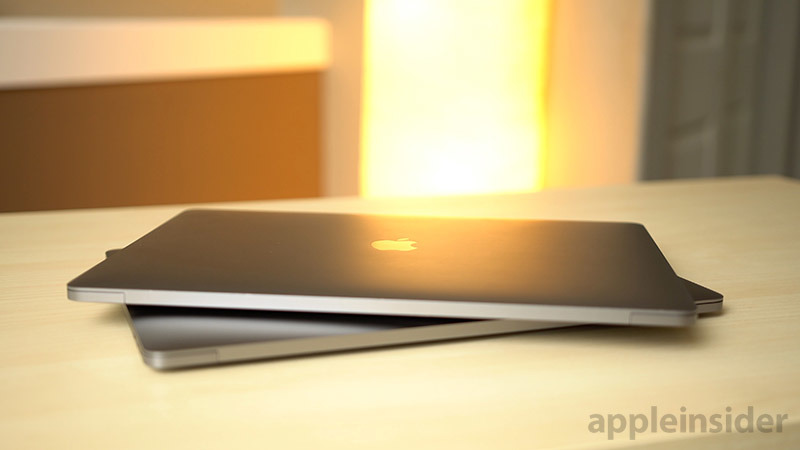
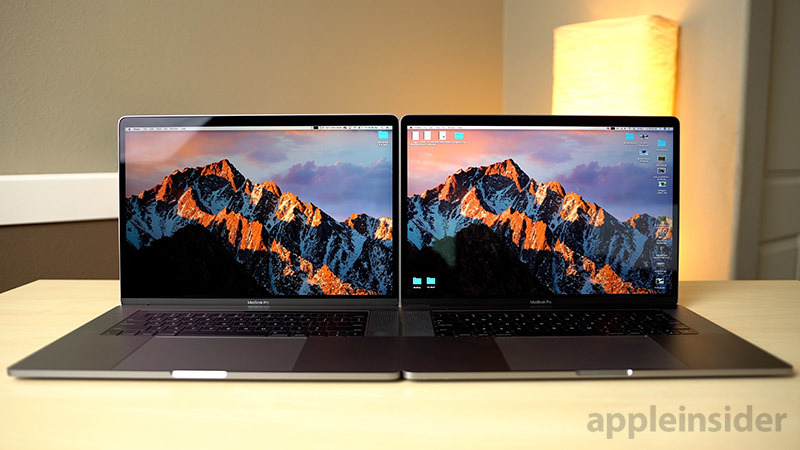
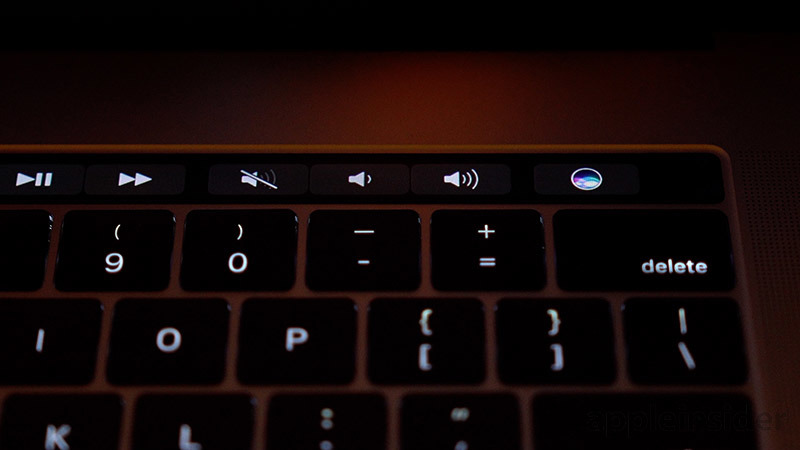
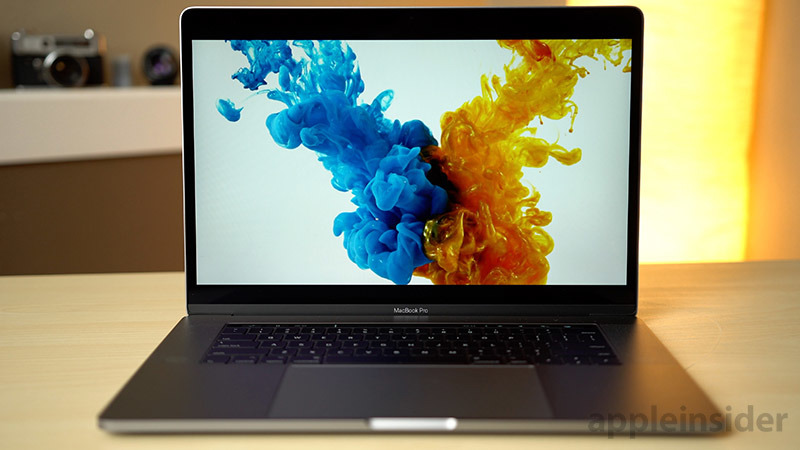
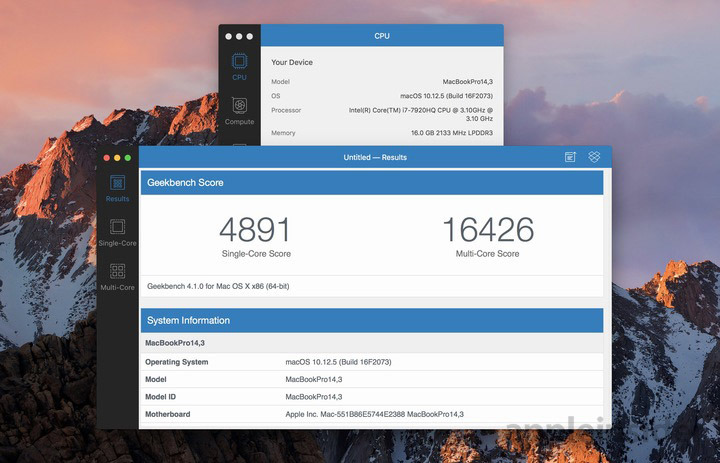

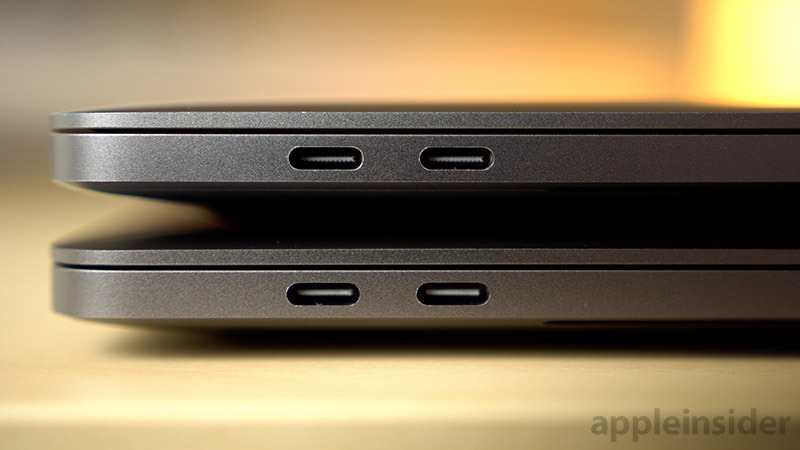








-m.jpg)






 Marko Zivkovic
Marko Zivkovic

 Malcolm Owen
Malcolm Owen

 Amber Neely
Amber Neely

 Wesley Hilliard
Wesley Hilliard
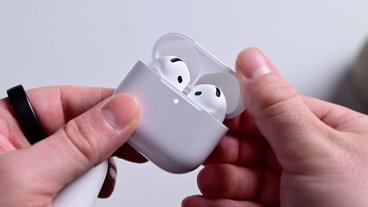








175 Comments
I don't seem to reed it in this article. Is this a winner, or is it an OK laptop for a very high price?
I'd love one of these machines, but my 2014 MBP is still working beautifully, I have no complaints. I think I'll upgrade whenever Apple releases their new display, as I'll probably need USB-C ports.
Why not tell the full story? MacBook Pro is great (albeit expensive), but Apple should use standard ports and connectors, not soldered proprietary components. Apple should allow to use custom SSD for instance, like the awesome Samsung 960 PRO SSD. Besides not charging two to three times more for them, as now does with iMac RAM, for instance when compared to market price at sites like Amazon. Do not get me wrong. I love the Mac, but Apple does not do it right sometimes. And this is a positive criticism to make happy customers and boost market share.